1969 Piper PA-30 Twin Comanche
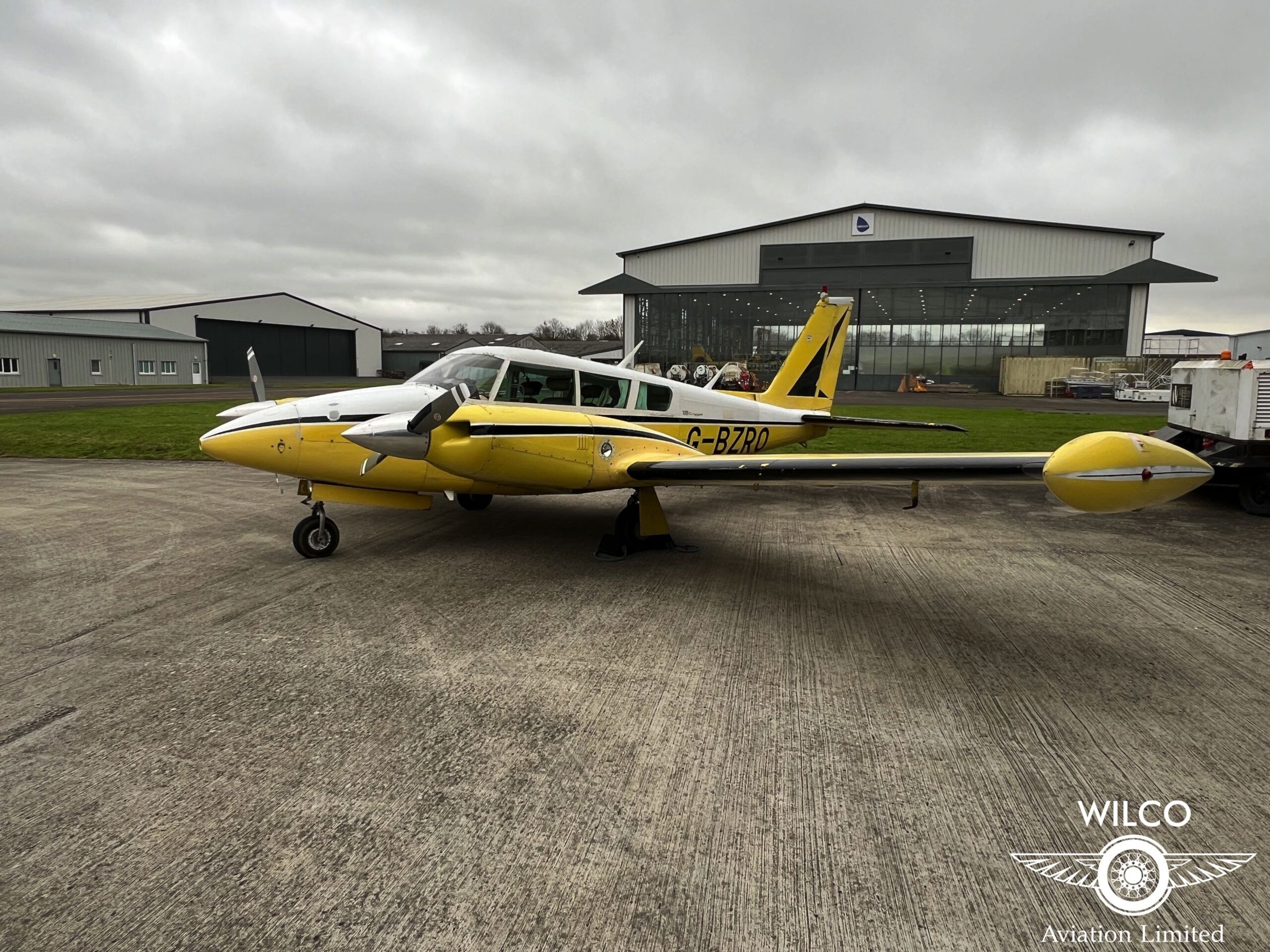
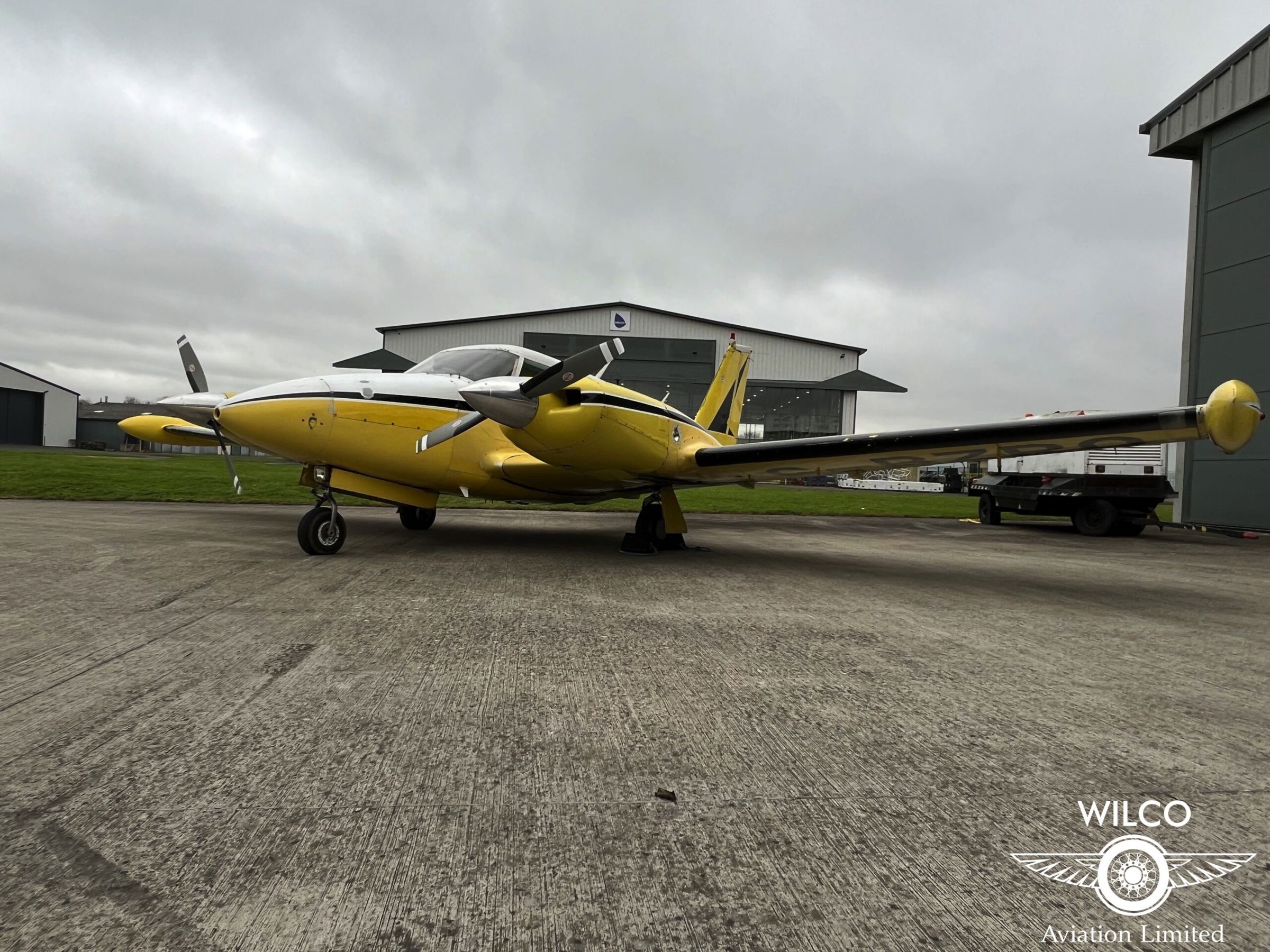
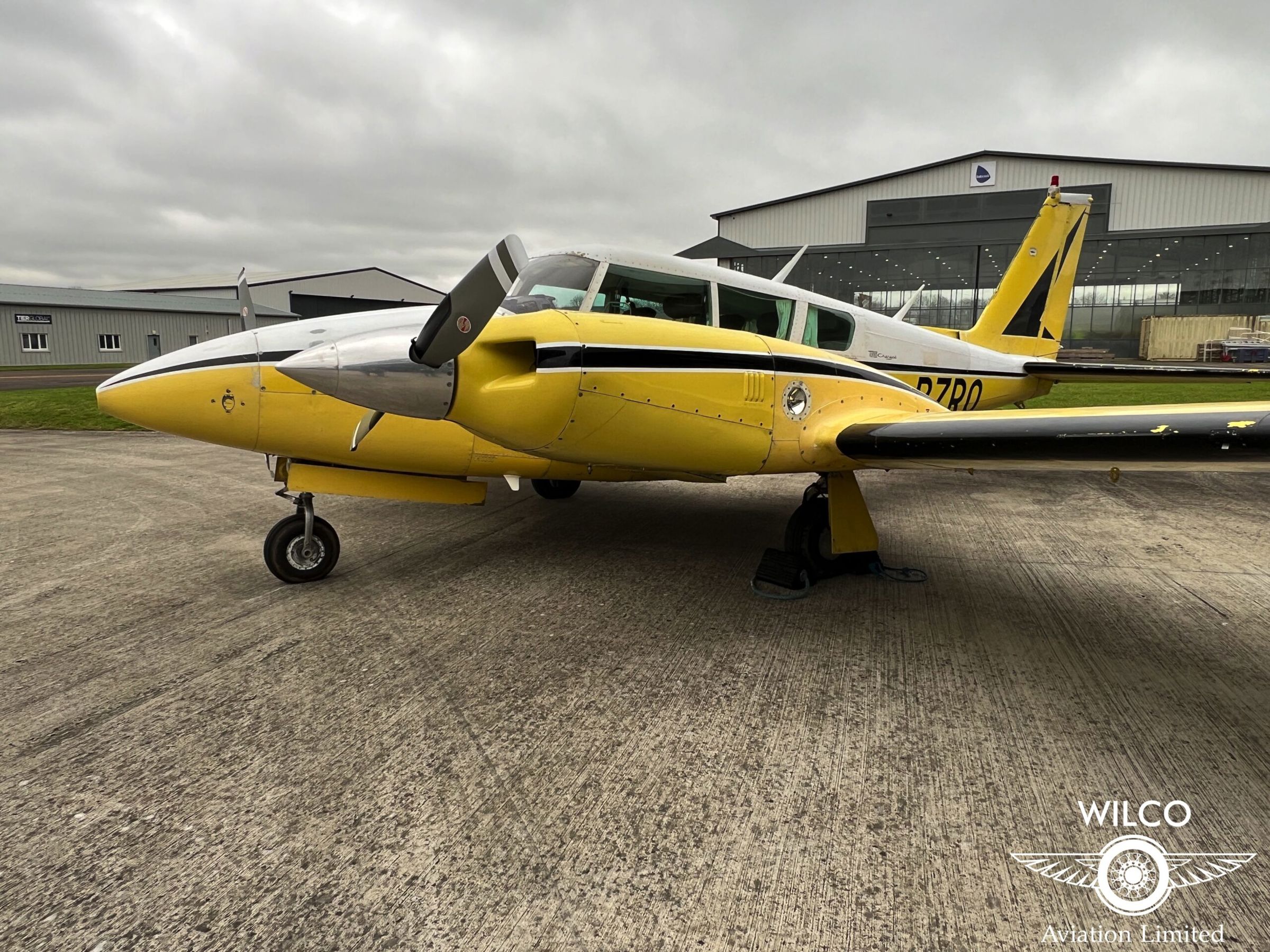
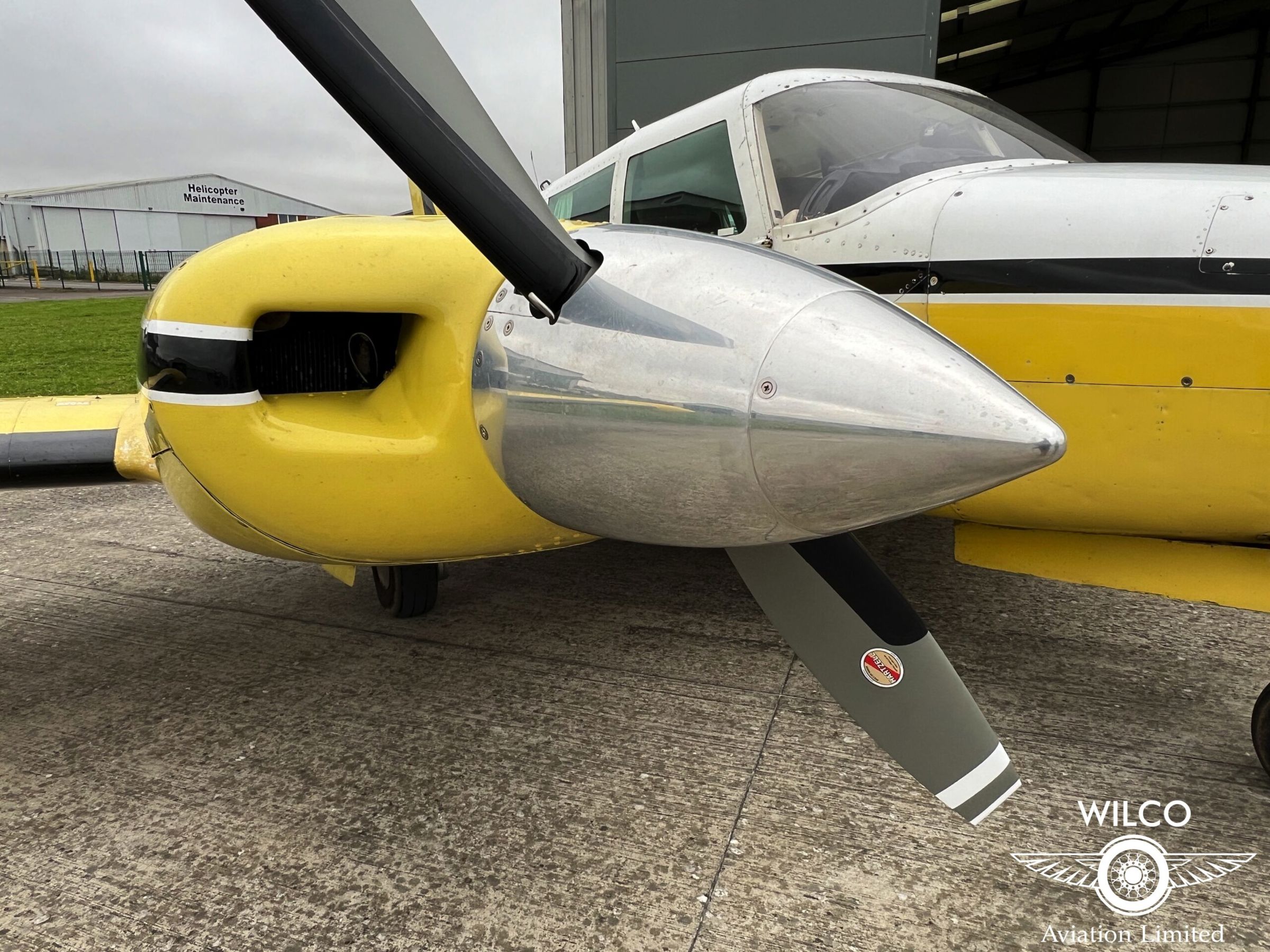
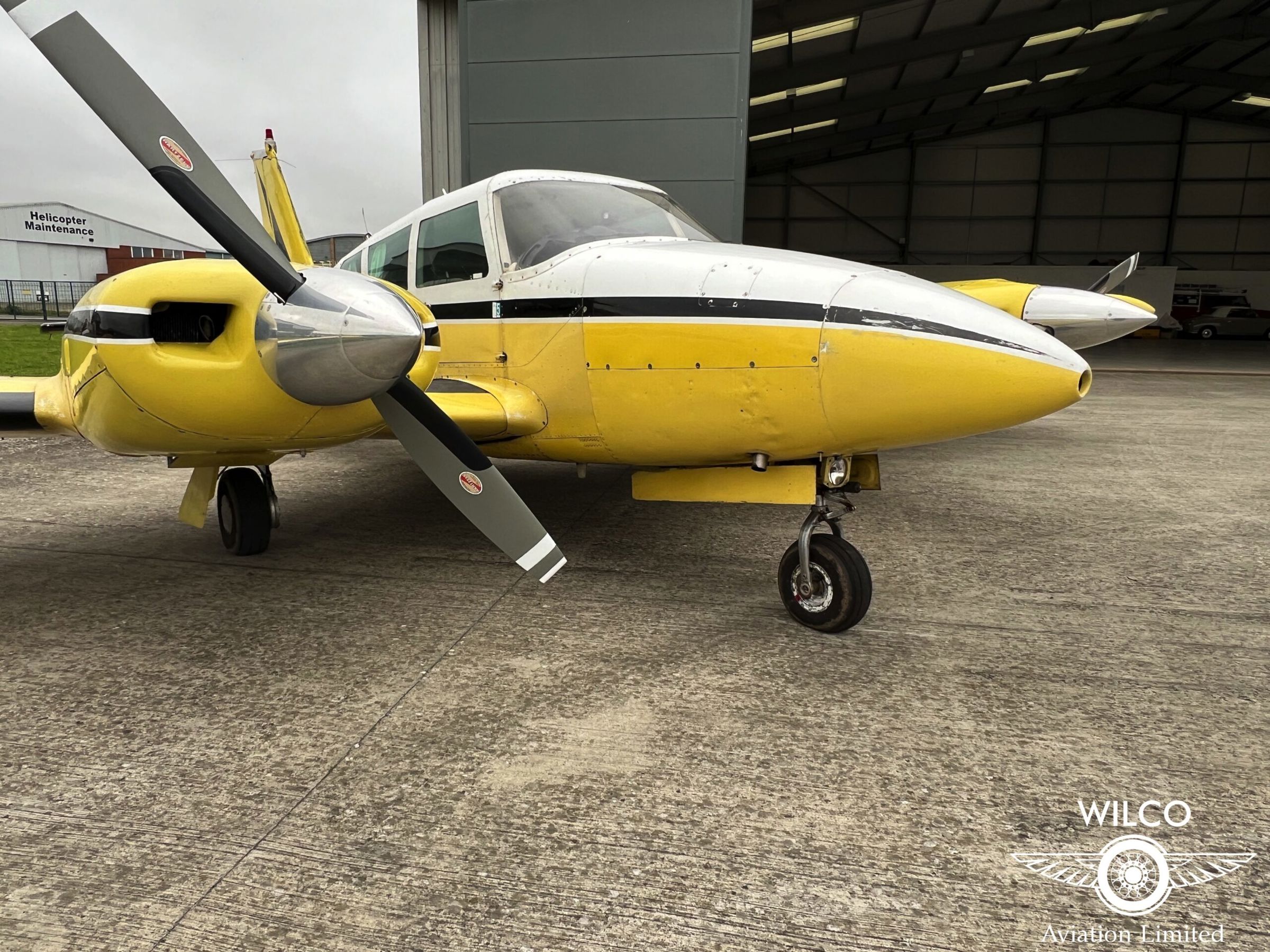
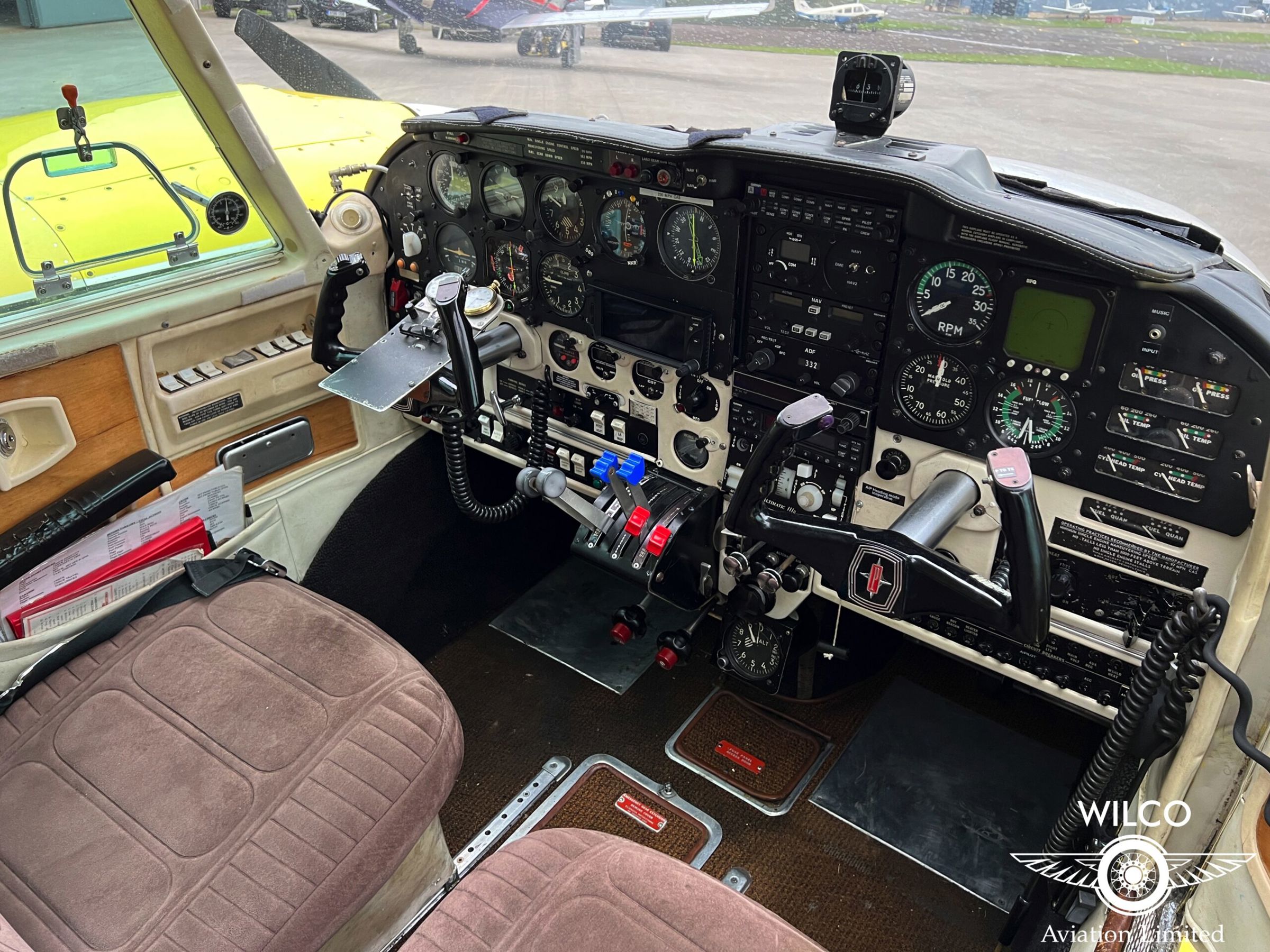
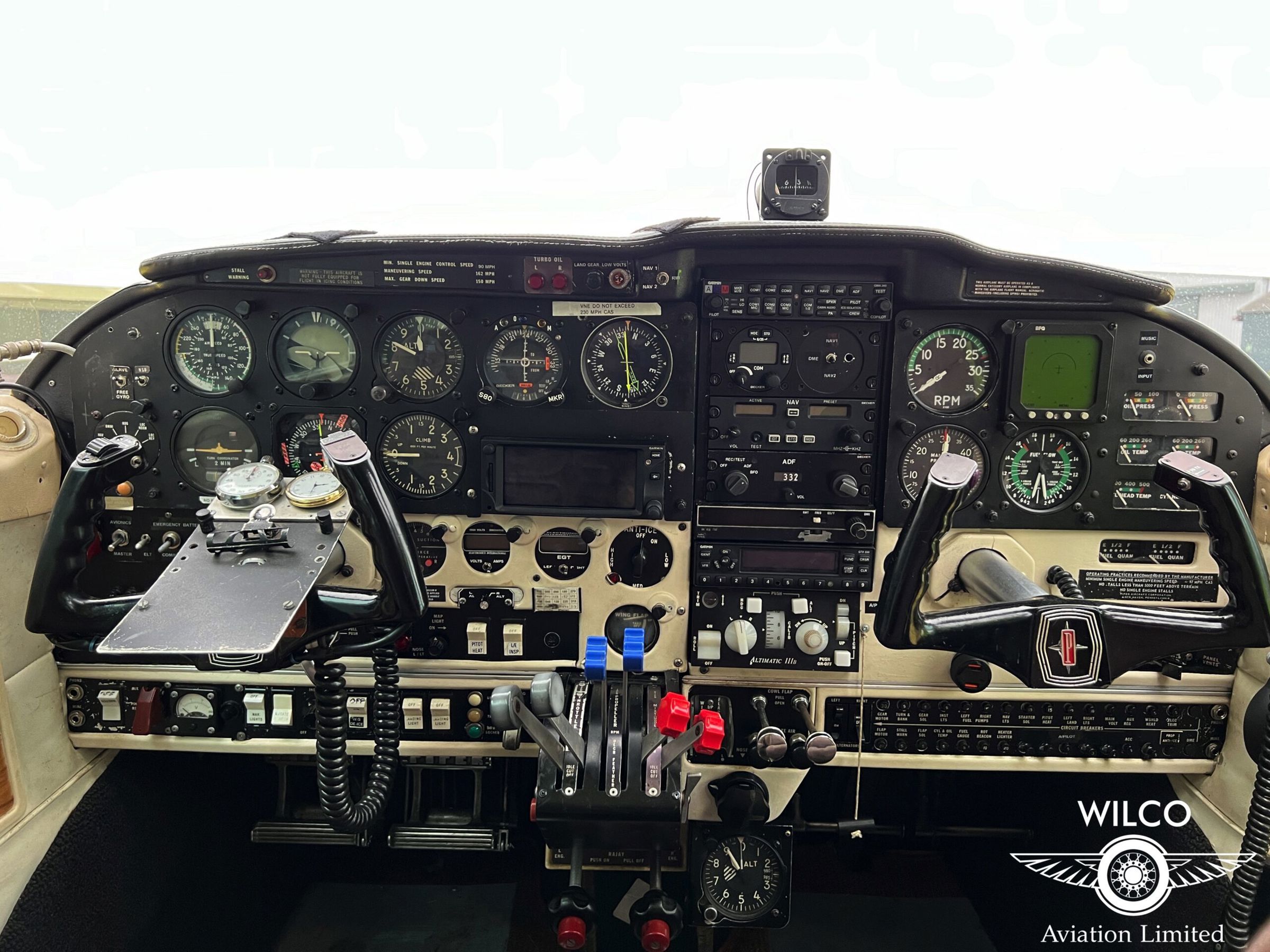
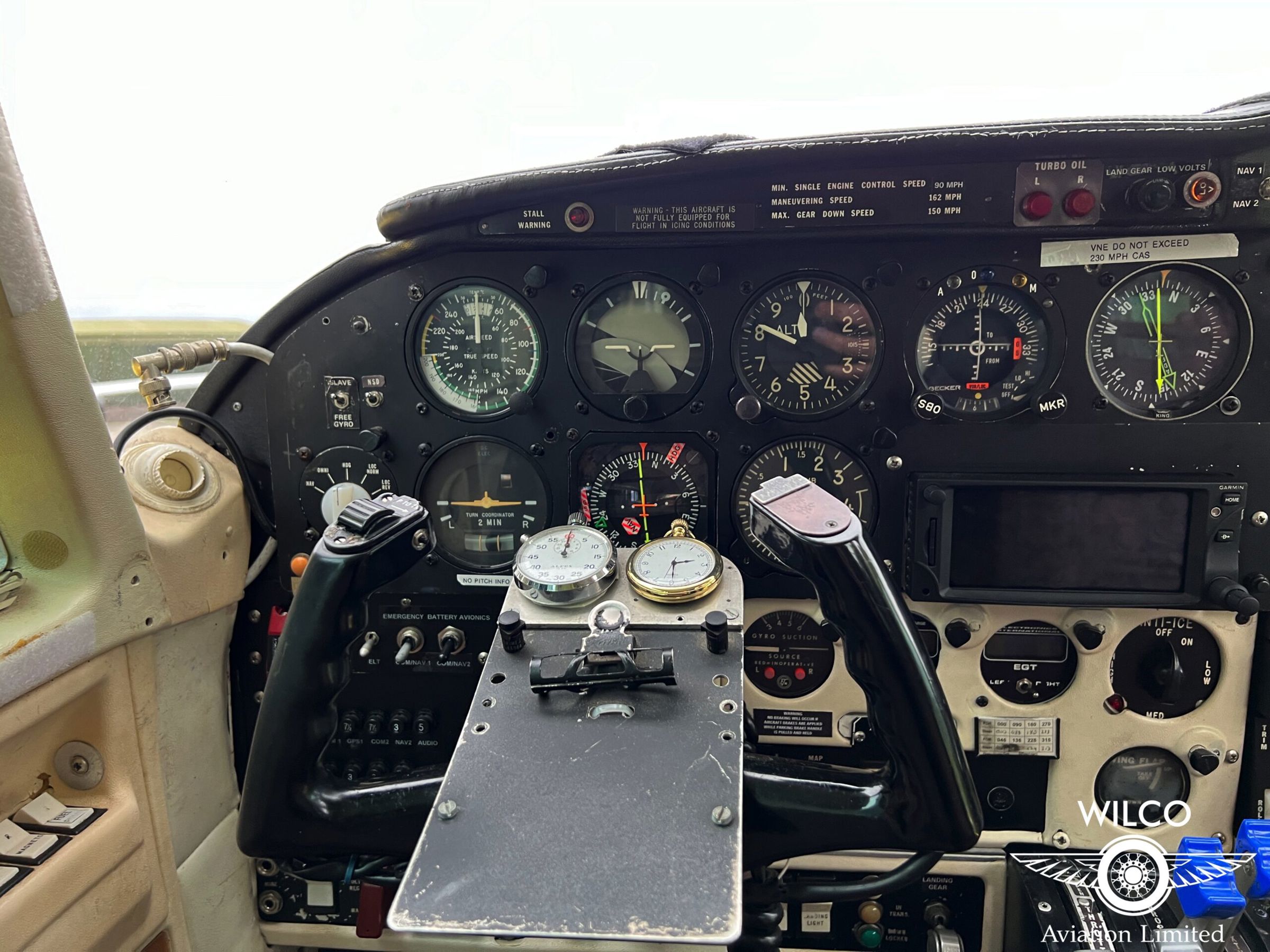
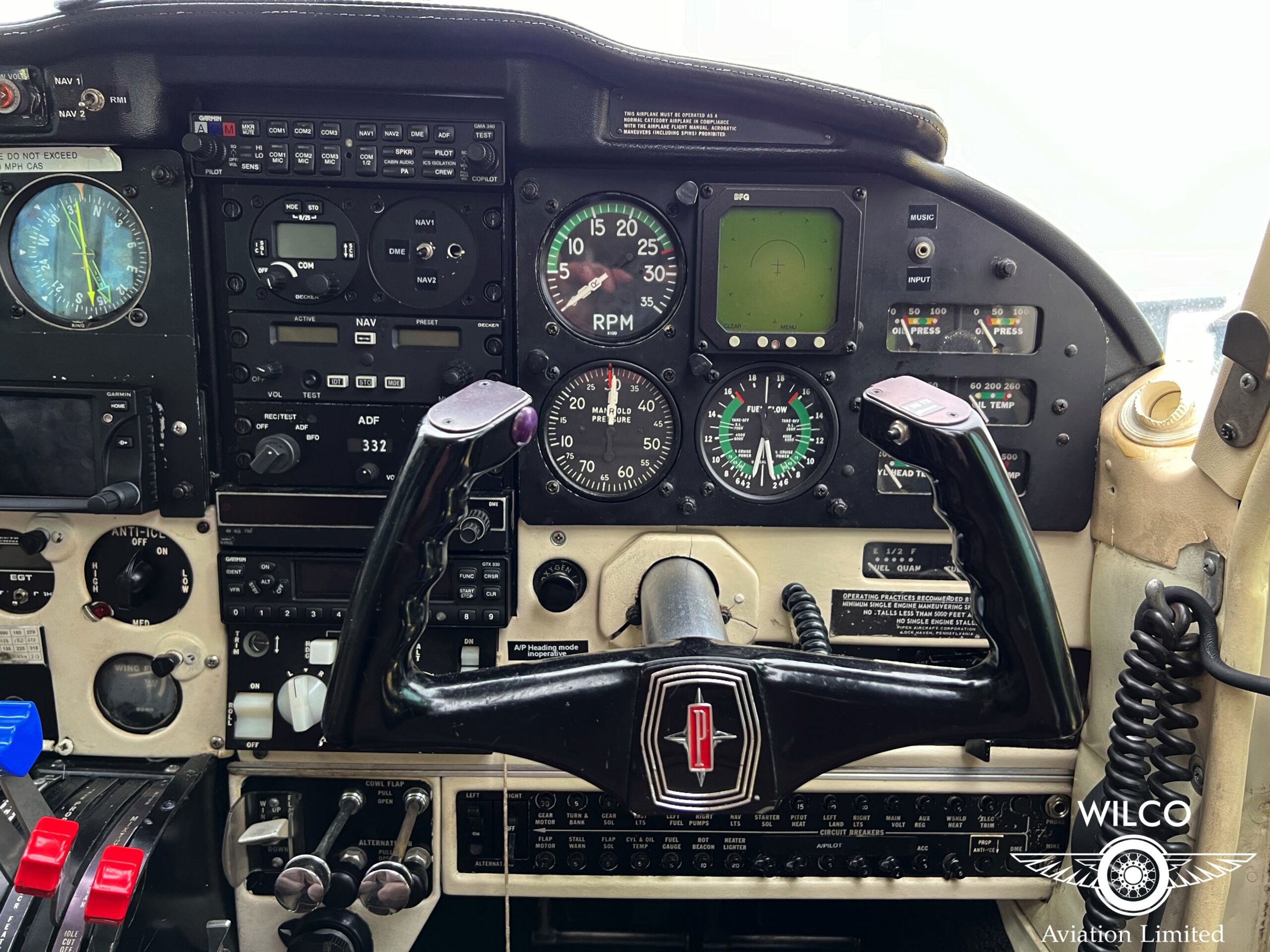
- Make
- Piper
- Model
- PA-30 Twin Comanche
- Year
- 1969
- Seller
- WilcoAviation
- Location
- Staverton Airport, United Kingdom
- Condition
- Pre-owned
- Seller type
- Broker
- Total Time
- 4330 h
- Engine Time
- #1: 82 #2: 82 h
- Undercarriage
- Retractable Tricycle
- Seats
- 6
- Registration
- G-BZRO
Highlights
- Wilco Aviation exclusively bring to the market this beautiful Turbo Twin Comanche powered by two Lycoming IO-320-C1A four cylinder 160 HP fuel injected turbonormalised engines.
Exterior
- Exterior – 5/10
- Exterior: Yellow and White with Black Trim.
Interior
- Interior – 5/10
- Interior: Cream Leather (with brown seat covers)
- 200lb (20 cu in) baggage compartment
- Single Piece Windscreen
Maintenance
- LAST ANNUAL: Due next 01/11/2024
- LAST ARC: Due next 15/10/2024
- G-BZRO, currently located at Staverton Airport, Gloucester, benefits from a zero timed engine overhaul on the port engine and a full top end overhaul on the starboard engine with less than 100hrs run time since. The port turbo was overhauled and the starboard inspected during engine overhaul. The propellers have been overhauled in 2022 and have only 30hrs on them since overhaul.
- All AD’s & SB’s complied with and a full set of aircraft logs.
- Airworthiness Until
- 11/01/2024
Specifications
- Seat Configuration
- 1+5
- Gross Weight
- 1690 Kg
- Empty Weight
- 1237 Kg
- Useful Load
- 453 Kg
- Cruise Speed
- 152 Kt
- Range
- 1100 Nm
- Fuel Capacity
- 454 l
Engines
Engine #1
- Manufacturer, Model
- Lycoming, O-320-C1A
- Power
- 160
- Fuel Type
- Avgas 100LL
- TTSN
- 82
- TSOH
- 82
- OHD
- 07/31/2020
- Propeller
- Hartzell, HC-E2YL-2BSF
- Type
- Variable Pitch
- Blades
- 2
- TTSN
- 30
- OHD
- 10/31/2022
Engine #2
- Manufacturer, Model
- Lycoming, O-320-C1A
- Power
- 160
- Fuel Type
- Avgas 100LL
- TTSN
- 2080
- TSOH
- 82
- OHD
- 07/31/2020
- Propeller
- Hartzell, HC-E2YL-2BSF
- Type
- Variable Pitch
- Blades
- 2
- TTSN
- 30
- OHD
- 10/31/2022
Avionics
- GPS/NAV/COM
- Garmin, GTN 650
- 8.33 Spaced
- COM
- Becker Avionics, AR6201
- NAV
- Becker Avionics, NR 3320
- Audio Panel
- Garmin, GMA 340
- XPNDR
- Garmin, GTX 330
- Mode S Transponder
- DME
- Bendix/King, KN 64
- Stormscope
- Bennett Avionics, WX-900
- Other
- Horizontal Situation Indicator (HSI)
- Altimatic II Autopilot (2x Axis)
- Vertical Speed Indicator (VSI)
- Air Speed Indicator (ASI)
- Attitude Indicator (AI)
- 2x Altimeters
- RPM Gauges
- Fuel Flow Indicators
- Manifold Pressure Gauges
- Cylinder Head Temperature Gauges
- ADF
- Becker Avionics, AD2070
Electrical equipment
- Lights
- NAV Lights
- Wing Tip Landing Lights
- Nose Wheel Landing Light
- Leading Edge Light
Airframe equipment
- De-Icing Systems
- Prop de-ice
- Fuel
- Wing Tank STC
- Tip Tanks
Safety equipment
- Oxygen System
- Oxygen and 4-place outlets
Modifications and performance equipment
- Engine
- 2 x Alternators (rather than dynamos)
- Emergency battery backup
Ground equipment
- Tow Bar/Tugs
- Tow Bar
- Cover
- Aircraft covers
Other
- Other
- Engine and Airframe Spares & Accessories (available by separate negotiation)
Additional Remarks
- This aircraft is the perfect touring aircraft being fully IFR equipped and fast with the peace of mind of two engines.
- The Piper PA-30 Twin Comanche is an American twin-engined cabin monoplane designed and built by Piper Aircraft. It was a twin-engined development of the PA-24 Comanche single-engined aircraft.
- A complex light twin, with retractable landing gear, seating up to 6 in this later C model that has the facility to insert two extra seats in the luggage area with the addition of extra windows (seat included), and cruise speeds ranging from 160-210 mph on twin 150-160 horsepower engines, it competed with the more-powerful Cessna 310 and Beech Baron, and later with Piper’s other light twins.
- The Twin Comanche was designed to replace the Piper Apache in the company’s lineup of products. The prototype was converted from the single-engined Comanche by Ed Swearingen who at the time operated a facility that specialised in the modification of production aircraft. A Comanche was modified with two 4-cylinder 160 hp (120 kW) Lycoming IO-320-B1A engines and first flew at San Antonio, Texas on 12 Apr 1961. The design was designated the PA-30 on the March 17, 1962 and named the Twin Comanche. The prototype (registered N7000Y) was built at Lock Haven and first flew on November 7, 1962. FAA Type approval was awarded on February 5, 1963, the first production aircraft was completed on April 2, 1963 and the first delivery made on July 15, 1963.
- The Twin Comanche was produced on the same Lock Haven, Pennsylvania, production line as its single-engined cousin; production ceased when the factory was flooded in 1972. Piper chose at that time to focus on its equally popular Cherokee 140/180/235/Arrow line, manufactured in Florida.
- The added benefit of the turbonormailsed engines vs turbocharged engines, means that the manifold pressure is maintained at higher altitudes in a slightly different way to ensure power and thus cruise speed is kept without the need of boosting the engines (beyond manifold sea level pressures) which inadvertently increases engine loads but to maintain sea level manifold pressures at altitude.
- Romeo Oscar has had various upgrades and improvements whilst in its current ownership for the last 23 years. Some of these include the common smaller nose wheel for better visibility whilst taxiing as well as clearance in the nose wheel gear bay, Knots2U wing root fairings and flap gap seals increasing the cruise speed by a reported 3-5 knots whilst decreasing the stall speed and increasing the climb performance.
- Furthermore, a set of LoPresti upgrades fitted to the flap track covers. Three on each flap not only clean up the aerodynamics, but more importantly, they help keep dirt and debris from getting caught up in the flap tracks.
- You may have noticed the propellers look a little different to a conventional blade, if there is such a thing. No its not a prop strike! These Q Tip props have a huge benefits increasing interference drag and disbanding vortices. The greater the bend angle, to a point, the greater the reduction of propeller drag. The reduction in induced drag exceeds the increase in interference drag, which is parasitic drag. The benefits are increased thrust due to less drag, greater performance due to more increased thrust and decreased drag, and reduced fuel burn.
- Another added benefit of Q-Tip propellers is a reduction of propeller noise. Often overlooked, propeller tip vortices are the main culprit for propeller noise. By eliminating propeller tip vortices, you decrease the overall noise of the aircraft.
- Additionally, the bends of the Q-Tip propellers increase ground clearance and therefore decrease the chances of a propeller striking foreign objects.
- Approx 7hr endurance at cruise